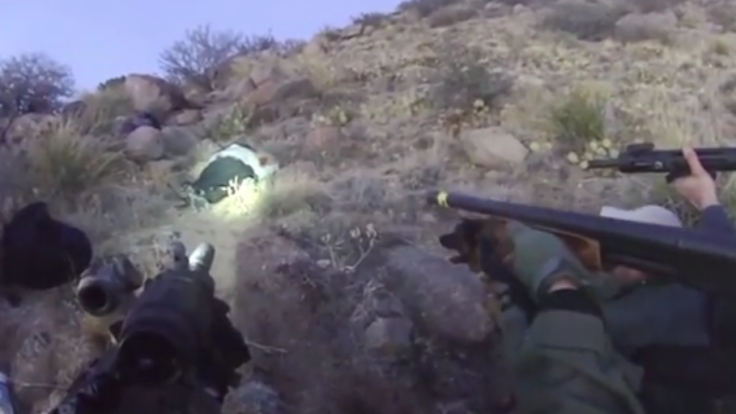
Albuquerque Police Officers Dominique Perez and Keith Sandy face second-degree murder charges in the killing of James Boyd, whom the officers shot to death in March of 2014. Perez and Sandy shot Boyd after he refused to leave his campsite. Video of the incident incited protests throughout New Mexico and added to a growing number of highly publicized police shootings. It also foreshadowed a Department of Justice investigation, initiated in 2012 and released about a month after Boyd’s death, that found widespread abuse in the Albuquerque Police Department (APD.)
“The penalty is dramatically reduced in the murder in the second degree charge,” defense attorney Barry Porter, who is not involved in the case, told KOAT News. “Murder in the second degree carries a 15 year penalty. And the judge actually has the discretion to suspend that sentence, so that the person doesn't have to do prison."
First Degree Charges Dropped
The charges filed against Perez and Sandy were dropped to second-degree murder after a shuffling of prosecutors. District Attorney Kari Brandenburg had initially brought first-degree charges, which carry a minimum 30-year sentence. However, a local judge ruled that she had a conflict of interest in the case. In Brandenburg’s place, an outside prosecutor was announced. That prosecutor dropped the first-degree charge for a less serious second-degree one, as local media reported on Monday.
Both Perez and Sandy deny wrongdoing in the case. Sandy’s attorney says that he’s innocent, citing Boyd’s possession of a knife: "Keith was a police officer protecting a fellow officer when he shot a mentally unstable man wielding two knives. There is simply no criminal intent."
The prosecution’s case against the two officers is bound to rely on body camera footage of the event released by the Albuquerque Police. Whether or not the officers involved are guilty of murder will be left to judges and jury. In the court of public opinion, however, the APD look pretty bad. The video clearly shows Boyd, who suffered from schizophrenia, yelling insane things at the officers. It also shows that the officers began their assault on Boyd with bullets, and switched to less-lethal methods (an attack dog and shotgun-fired bean bags) after he is shot and facedown on the ground.
Slow March To Department Reform
Boyd’s death underscored for the public the three main points that the Department of Justice (DOJ) issued in their investigation. Firstly, that APD officers “frequently use deadly force against people who pose a minimal threat and in situations where the conduct of the officers heightens the danger and contributes to the need to use force.” Given that Boyd was a paranoid schizophrenic, the phalanx of the S.W.A.T. officer might have incited his threatening behavior. Second, the “use less lethal force, including electronic controlled weapons, on people who are passively resisting, non-threatening, observably unable to comply with orders.” Only after Boyd lay motionless was he tasered and shot at with bean bags. Lastly, the report found that “Encounters between APD officers and persons with mental illness and in crisis too frequently result in a use of force or a higher level of force than necessary.”
Following the DOJ investigation, the APD has been required by law to reform its policies and training from the ground up. However, a year later, it’s not clear exactly what that reform is supposed to look like. A forthcoming report will reportedly detail them, but APD’s Justice monitor, Dr. James Ginger, explained this week that the reform will take about four years.
"This is a marathon, not a sprint," Ginger told local reporters. "This is designed to be a four-year project."
© 2025 Latin Times. All rights reserved. Do not reproduce without permission.




